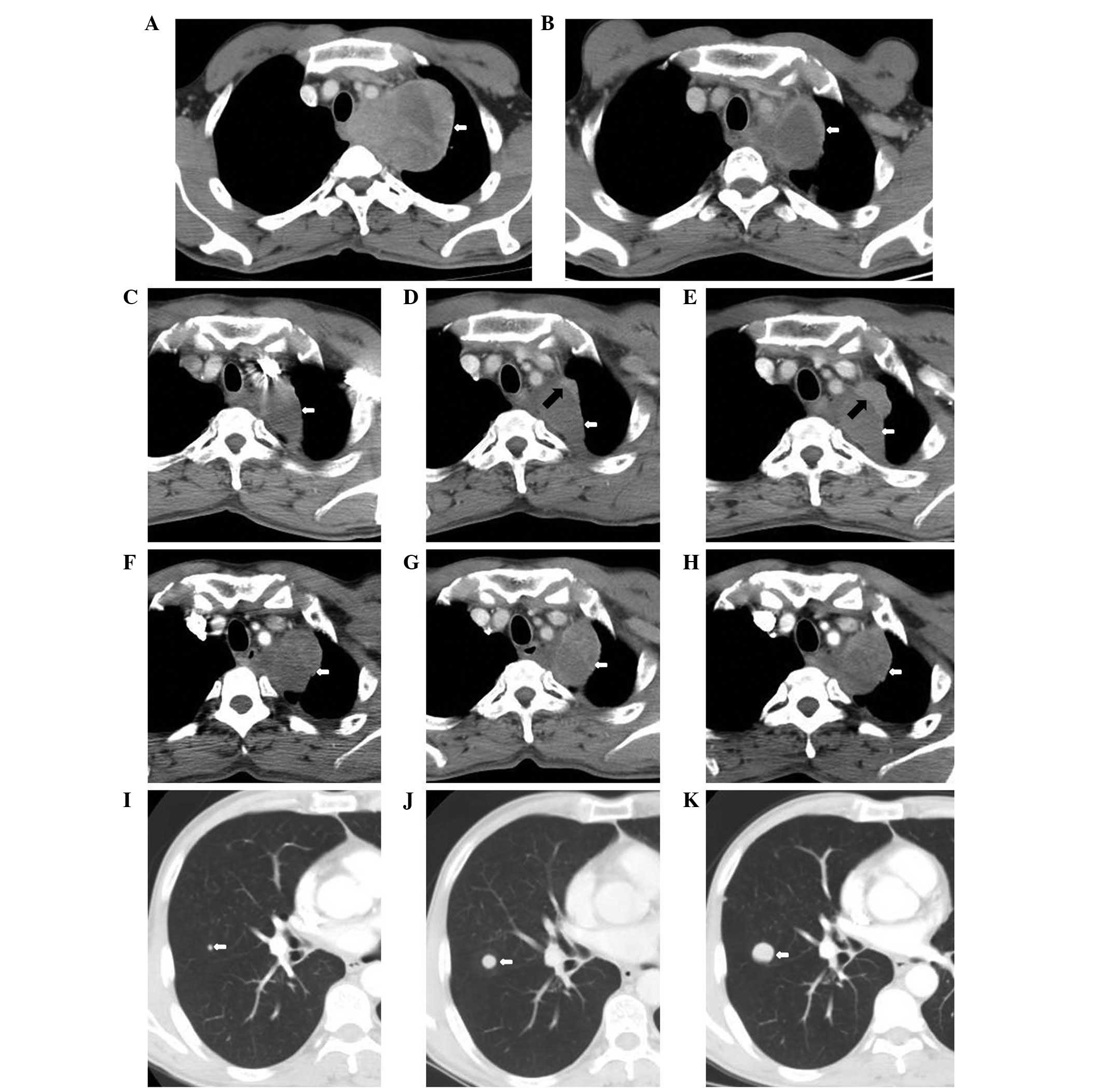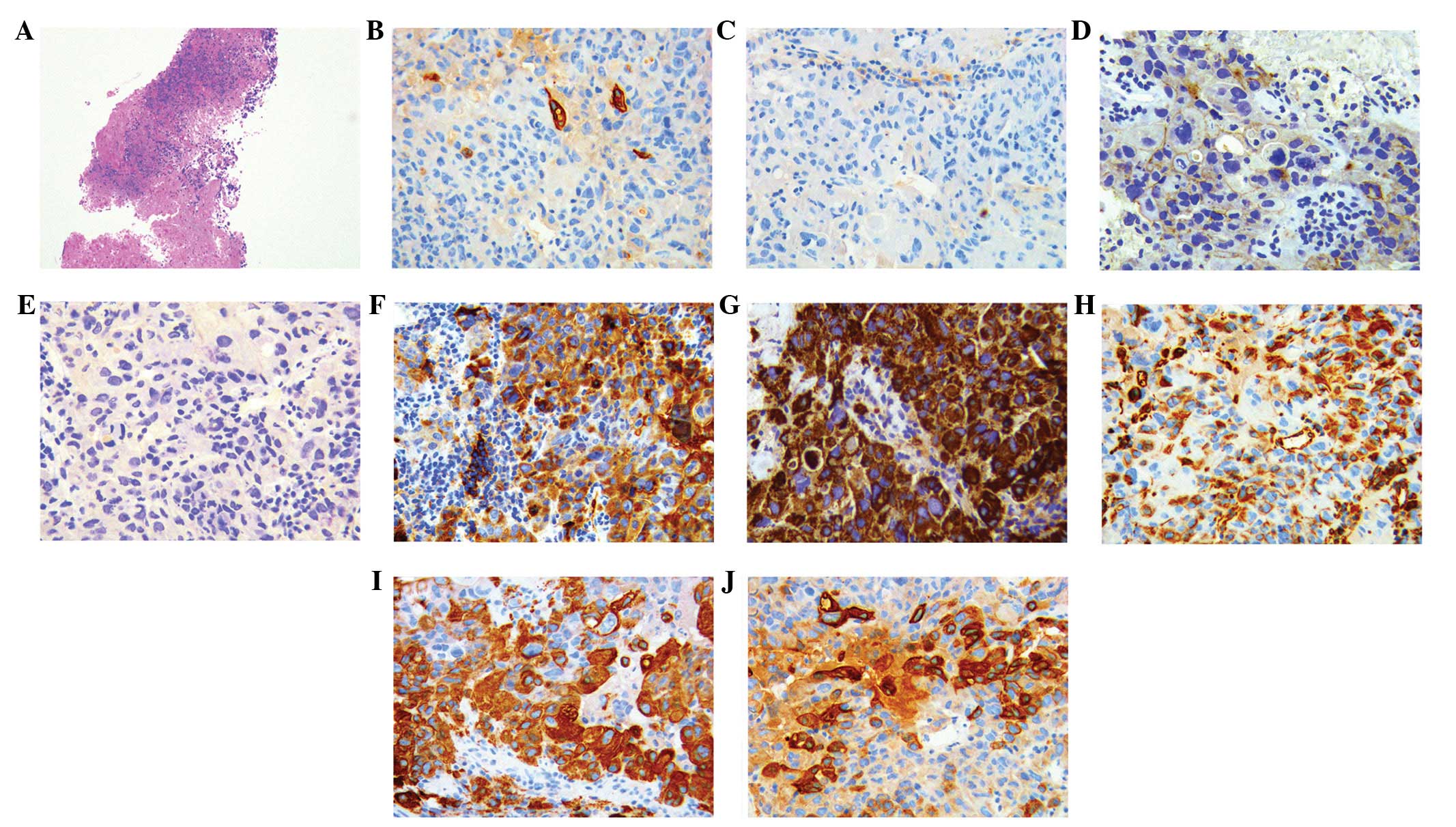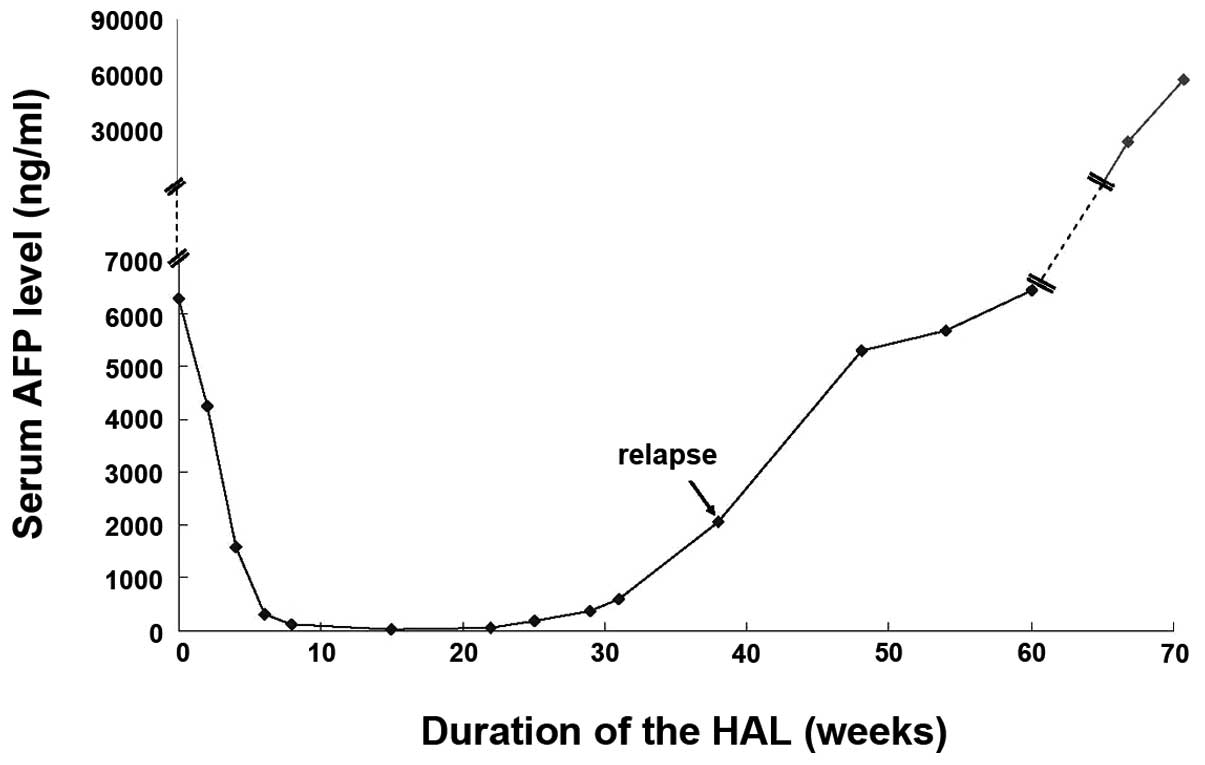Hepatoid adenocarcinoma of the lung: Presenting mediastinal metastasis without transfer to the liver
- Authors:
- Published online on: April 15, 2014 https://doi.org/10.3892/ol.2014.2064
- Pages: 105-110
Metrics: Total
Views: 0 (Spandidos Publications: | PMC Statistics: )
Total PDF Downloads: 0 (Spandidos Publications: | PMC Statistics: )
Abstract
Hepatoid adenocarcinoma of the lung (HAL) is a rare type of lung cancer. Its diagnosis and treatment may be difficult due to the varied presentation; however, immunohistochemical analysis facilitates the diagnosis. The present study presents a case of HAL. The patient was a 48‑year‑old male who presented with a primary complaint of back pain. A chest computed‑tomography scan revealed a lobulated soft‑tissue mass that extended from the left lung apex to the middle and posterior mediastinum. The area of the largest cross‑section was 7.9x10.0 cm and the lymph nodes did not demonstrate metastasis. Immunohistochemical staining of a transbronchial lung biopsy revealed that the tumor cells were α‑fetoprotein (AFP)(positive) and hepatocytes(positive) and a diagnosis of hepatoid carcinoma of the left lung was established. The level of serum AFP, a tumor marker, was elevated (6,283 ng/ml). The patient presented with mediastinal metastases and was classified as stage ⅢA (N2); following diagnosis, the patient received concurrent chemoradiation. Subsequent to chemoradiation, the left lung lump with the largest cross‑section was 3.3x4.2 cm and the serum AFP had fallen to its lowest level (23.11 ng/ml). However, when the patient relapsed, the serum AFP level elevated markedly (57,800 ng/ml). Furthermore, the nodules of metastasis increased in number and enlarged, with the largest measuring 2.1 cm. The patient succumbed as a result of a lung infection.












